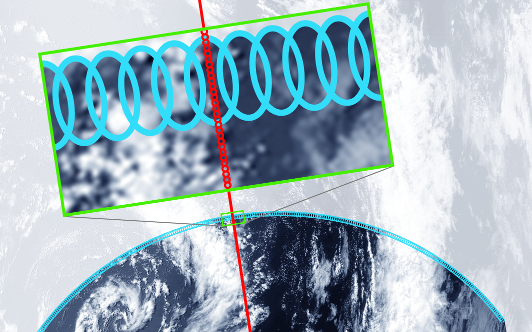ESA Wide-Swath High-Resolution Cloud Profiling - Scientific Concept Study

Objective
Global, high resolution 3D measurements of clouds are highly desired. We could use them to improve our atmospheric circulation model on various scales, we could evaluate forecast and climate models, or even assimilate cloud parameters in the forecast to draw the models even closer to the real weather situation. And yet such observations are not available. There are exciting satellite missions such as the current CloudSat/CALIPSO and the upcoming EarthCARE mission, which employ radars and lidars to measure the cloudy atmosphere with a high vertical resolution, but they miss a great spacial coverage because their swaths are very narrow. Unfortunately, they will also be over in foreseeable future. What remains are the satellite missions employing classic passive microwave sensors, such as the current MetOP and the future MetOP-SG mission. These measurements have great spatial coverage - but unfortunately in this case the vertical resolution is missing. It would be very beneficial to fly both technologies at the same time. However, with the current upcoming missions this is unlikely, since EarthCARE's lifetime will be over before MetOP-SG will begin its measurements.
In this study, we investigate the synergy between a cloud radar and the passive millimeter/sub-millimeter instruments on MetOP-SG. The two types of synergy that we investigate are:
- What is the added value of an active radar instrument profiling the atmosphere in the context of the passive sub-millimeter observations?
- Can we retrieve a joint profile, where the radar is augmented by coincident passive observations?
- Can we retrieve 3D scenes, where the passive observations are augmented by close-by but not coincident radar observations?
To develop and test retrieval algorithms, we will use simulated atmospheric scenes from the ICON model, which are produced within and kindly provided by the BMBF project HD(CP)2 (High Definition Clouds and Precipitation for Advancing Climate Prediction), and from the GEM model, which are provided by Environment Canada. In a first step we will set up a reasonable set of instrument requirements for the radar.
We then use the Atmospheric Radiative Transfer Simulator (ARTS) to simulate the radar and passive microwave measurements from these scenes with the respective instrument specifications. This will be followed by the development of single instrument retrievals as well as a synergistic 3D retrieval from the simulated observations. The specific challenges of this procedure are
- to ensure a realistic description of the atmospheric state and microphysics,
- to have entirely consistent treatment of the microphysics within the atmospheric and the radiative transfer model across the different observations,
- and to ensure computational efficiency for the detailed radiative transfer simulations.
This ambitious concept study, which is funded by the European Space Agency (ESA), is planned to pave the way towards a later mission proposal to observe 3D clouds from space.
Project members:
- University of Hamburg
- Prof. Dr. Stefan Bühler (Project lead)
- Dr. Verena Grützun (Project management)
- Dr. Manfred Brath (Project Scientist)
- Oliver Lemke (Scientific Programmer)
- Chalmers University of Technology, Gothenburg, Sweden:
- Prof. Dr. Patrick Eriksson (PI)
- Dr. Jana Mendrock (Project Scientist)
- Robin Ekelund (Project Scientist)
- Simon Pfreundschuh (project scientist)
- University of Reading, Great Britain:
- Prof. Dr. Anthony Illingworth (Core team for task 1)
- Prof. Dr. Anthony Illingworth (Core team for task 1)
- University of Cologne
- Prof. Dr. Susanne Crewell (Consultant)
- Prof. Dr. Pavlos Kollias, (Consultant)
- Max-Planck Institute for Meteorology
- Prof. Dr. Björn Stevens (Consultant)
- Prof. Dr. Björn Stevens (Consultant)
- University of Reading
- Prof. Dr. Anthony Illingworth (Consultant for task 2-4)
- Prof. Dr. Anthony Illingworth (Consultant for task 2-4)
- Environment and Climate Change, Canada
- Dr. Howard Barker (Consultant)
- Dr. Howard Barker (Consultant)
- ESA
- Tobias Wehr (ESA Technical Officer)
Internal project pages/project database
Author: Verena Grützun
- Duration: 2017-04 - 2019-03
- Project lead: Prof. Dr. Stefan A. Buehler
- Sponsor: European Space Agency (ESA, contract number 4000119850/17/NL/LvH)
